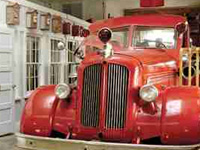|
The
highway route to the Mississippi Delta is flat land with
scattered outcroppings of forests of hardwood and cypress.
For miles the traveler can see fields and fields of cotton
row crops with the forests dotting the horizon. Small
towns sit quietly by the various approaching highways
waiting to welcome guests. But the Mississippi Delta is
a region of history, blues, antiques, nature, and the
river. The river is the reason for the Delta, but the
people of the Delta made their way with growing cotton,
making music, and enjoying nature. That's what the traveler
along the highways leading to the Delta wants to experience
- its history, its music, its antiques, its nature, and
its river.
 |
The Mississippi Delta is the region of lowlands bordering
the Mississippi River. It occurs, not at the mouth of
the river where it empties into the Gulf of Mexico as
many people think, but in the middle part of Mississippi.
Greenville is the largest Mississippi city in the Delta
and is located midway between Vicksburg in Mississippi
and Memphis, Tennessee.
Blues, Nature, History and the River
The Blues and the Delta are almost inseparable in conversations.
Blues can be discussed without mentioning the Delta, but
the opposite is seldom true. A walk along the streets
of Greenville will prove this to be true. Take a short
drive north to Clarksdale to one of the Delta's most popular
attractions -- the Delta Blues Museum. Take the scenic
Highway 1 North, which offers a panoramic view of the
Delta and its massive Levee System. Many of the original
records, instruments and belongings of some of the world's
greatest Blues players are at the Blues Museum in Clarksdale.
The Mississippi River Levee System is all that stands
between North America's largest river and the washing
away of the Delta's land. This engineering marvel created
largely by the blood, sweat and tears of manual laborers,
winds endlessly along the Delta landscape. The Washington
County Convention and Visitors Bureau can offer several
points available for motorcoach entry and exit for a brief
drive down this impressive project. Nearby is an antebellum
slave-built levee system along Rattlesnake Bayou, now
in the middle of one of Greenville's most exclusive neighborhoods.
The natural side of the Delta is almost as inseparable
as the Blues. Hunting and fishing are popular pastimes
in the Delta because of the abundance of wild game and
suitable habitat. Along the Mississippi River, a major
flyway during waterfowl migrations, wildlife refuges and
management areas are favorite winter hangouts for sportsmen.
There are excellent concentrations of ducks and geese
in the Delta's flooded timber and agricultural fields
and on its oxbow lakes. Fishing is a popular pastime on
these lakes also. An oxbow lake is one that is curved
and is formed by the changing route of a meandering river.
Oxbows are characteristic along the Mississippi.
The Walking Tour
Upon entering the city of Greenville, a visit to the historic
district is a must. Signs point to district from the main
street (Highway 82). Take the walking tour of the downtown
historic district. Then take the driving tour of the surrounding
area of Greenville. The renovated downtown district has
many fine restaurants and shops amidst the historic buildings
and museums. A restaurant is operating within the renovated
C & G Railroad Depot (built around 1880). Walk up
old Main Street along cotton row where cotton was traded
in years past. The buildings on both sides of the 200
block of Main Street display a certain character.
 |
The Old Number 1 Firehouse Museum on Main Street is a
vintage fire station with antique trucks and equipment
used to fight fires in the 1920s. The firehouse was originally
built in 1923 and served as a cotton factoring office.
It later served Greenville as a firehouse from 1923-1969.
There are a few other notable old buildings along Main
Street. The First National Bank Building (1903), the St.
Joseph Roman Catholic Church (1907), and the Hebrew Union
Temple (1906) are all examples are the architecture of
the day and are very prominent and distinctive structures
in the historic district.
Walnut Avenue is the main street running parallel and
adjacent to the river. Many restaurants and shops are
located along Walnut. Crossing Walnut toward the river
takes the traveler onto the levee. Topping the levee provides
an excellent vantage point of the Mississippi River and
the casinos along riverbank. The three large and popular
casinos (the Jubilee, the Las Vegas, and the Lighthouse
Point) on the other side of the levee create a contrast
to the historic downtown Greenville.
The Driving Tour
After taking the walking tour of the historic downtown
district, drive around the Delta and get another perspective
of the countryside. Stop by the River Road Queen Welcome
Center and sample the Delta's treasures. The Welcome Center
resembles one of the Victorian riverboats that once ruled
the Mississippi River. This unique exhibit originally
served as the State of Mississippi exhibit in the 1984
New Orleans World's Fair. In the water around the Welcome
Center are catfish - another thing for which the Delta
is famous. In season there is a small crop of cotton growing
on the grounds of the center. Get information here for
some of the nearby attractions of the Delta.
Several plantation houses are scattered throughout the
region. Some are private residences and only allow drive
by viewing. Linden Plantation was built in the early 1900s.
This twenty-room mansion is an example of turn of the
century Colonial Revival architecture and is now operated
as a bed and breakfast inn. It is located on South Lake
Washington Road south of Greenville off Highway 1.
Leroy Percy State Park is the oldest in Mississippi. It
is characterized by bubbling hot springs, cypress trees
and ancient oaks laced with spanish moss. It is also known
for its alligator population. Visitors can observe the
animals from an elevated boardwalk. There is an RV park,
restaurant, fishing and swimming facilities at the park,
as well as a wildlife preserve. Leroy Percy State Park
is located south of Greenville. To get there from Greenville,
take Highway 1 south to Highway 12. Go east to the park.
Yazoo National Wildlife Refuge is further south of Leroy
Percy on Highway 1. This is a wetland project between
the U.S. Fish and Wildlife Service and Ducks Unlimited.
Bird watching is considered excellent here at Yazoo National
Wildlife Refuge and at Leroy Percy State Park.
Greenville Balloon Fest
There are annual events that occur in Greenville to commemorate
the Delta's heritage - the Delta Wildlife Expo in the
fall, Greenville Celebrates America on the Fourth of July,
Delta Blues Week, the second largest blues festival, and
the Mississippi Folk Festival. But there is nothing as
impressive as seeing dozens of hot air balloons rising
above the banks of the Mississippi River and floating
over the historic district of Greenville.
The last weekend of October the Greenville Balloon Festival
takes to the air. For the past few years hot air balloons
from around the country have gathered on the Great Wall
of the Mississippi. With balloon glows in the evening
and races early in the mornings, there are events over
the weekend to make this a special time over the Delta.
The Mississippi Delta is an enchanting destination. A
visit to Greenville and the surrounding area will make
the traveler understand the mystique of the Delta. Its
music. Its history. Its nature. Its river.
If
You Go: |
Washington
County Convention and Visitors Bureau
410 Washington Avenue
Greenville, MS 38701
1-800-467-3582
1-662-334-2711
http://www.thedelta.org
E-mail: wccvb@tecinfo.com
River
Road Queen Welcome Center
Highway 82 and Reed Road
Greenville, MS 38701
1-662-332-2378
To
get to Greenville from the Interstate 55, the major
north south thoroughfare of Mississippi, go west
from Exit 185 at Winona on US Highway 82. Greenville
is about seventy-five miles west. An alternate north
south route to Greenville is either along US Highway
61 or State Highway 1. Highway 1 is a part of the
Great River Road, which parallels the Mississippi
River. The Great River Road is a series of highways
that follow the Mississippi along its entire length
from its beginnings in Minnesota along the borders
of Wisconsin, Iowa, Illinois, Missouri, Kentucky,
Tennessee, Arkansas, Mississippi, and Louisiana.
The Great River Road takes many highway numbers,
but is marked on maps and with road signs by a symbol
of a paddleboat's steering wheel.
Other approaches to the Mississippi Delta and Greenville
are by way of Interstate 20 through Jackson, Mississippi,
and Interstate 40 through Memphis. Interstate 55
intersects with both I 20 and I 40. |
|